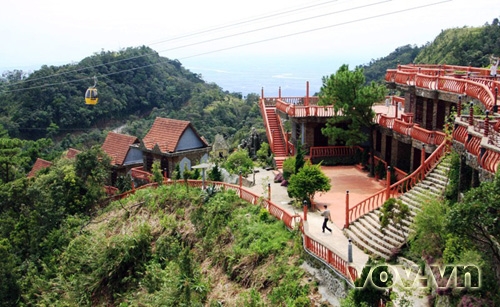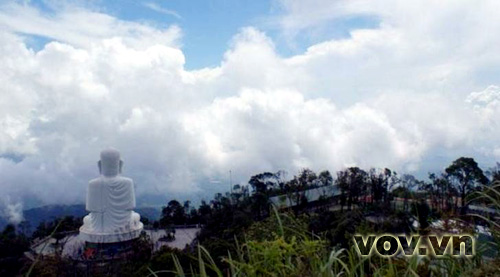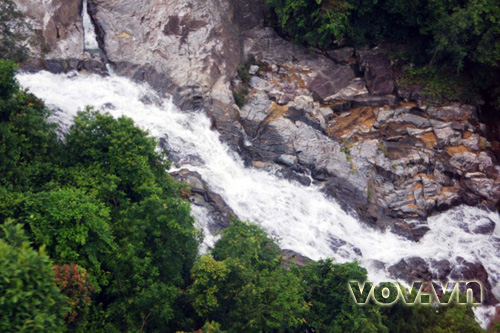Sitting 1,487km above sea level and within spitting distance of Da Nang City, the Ba Na resort area offers a wonderful respite for any weary traveller.

With its awesome landscape and year-round cool, Ba Na serves up the perfect alternative to the hustle and bustle of the city. However, the resort’s only accessible by a tortuous but spectacular 20km road running from the foot of the mountain across mist-covered hillsides.
The first attraction to thrill tourists is the clear skies and puffy clouds floating over the valleys below and spectacular panoramic views of Da Nang City, Thung Bay (with its semi-circle coastline from the foot of Hai Van Pass Tunnel to Son Tra Peninsula), My Khe Beach, Ngu Hanh (Marcle) Mountains, and Thu Bon River (embracing fertile fields in Quang Nam Province).
The blue waves of the Eastern Sea lapping Cham Island are visible and the picturesque landscape is breathtaking.
Tourists can enjoy four seasons in one day: spring in the morning, summer at noon, a little of autumn in the afternoon, and a cold winter bite at night. Ba Na’s weather is unique. In Ba Na, rain often falls only halfway up the hill, leaving the peak and the sky above clear and the views spectacular.
The French turned Ba Na into a resort in 1901. In 1912, a progressive governor general of Indochina designated the area as a forestry reserve. However, in 1930, the French reclassified Ba Na as a holiday resort for French officers and built hotels and villas. After decades of war and neglect, the structures fell into disrepair. Then, in 2000, developers reclaimed Ba Na from the jungle. A tourist town rose from the ruins.
The areas greatest asset is its pristine eco-system and temperate climate. Ba Na is famous for its bio-diversity. Its flora and fauna contain over 544 tree species (including six rare species) and 256 vertebrates, all of which are recorded in Vietnam’s Red Book.
Endangered vertebrates include the crested argus, the Asian black bear, the yellow-cheeked gibbon, and lignum aquilariae, along with several other species yet to be listed that are thought to survive in small numbers, protected only by the pristine wilderness.
Stone steps lead adventuresome tourists to 18th century Linh Ung Pagoda, which houses ancient documents about the temple’s history and boasts a 30m tall statue of Buddha.
French wine cellars built during the colonial period which are still used for aging the locally grown products, are another attraction. Wine-tasting tours are popular with many visitors.
Suoi Mo (Mo Stream) near the magical Thach Tien Waterfall is another favourite spot for tourists during muggy summer days. Mist created by the waterfall looks like “fairy hair”.
The Ba Na area has many facilities, including villas, hotels, restaurants, tennis courts, and many other services. Most impressive is the new cable car that links the Ba Na Peak to Mo Stream. Strung between 22 pillars, its 94 cars can carry 1,500 people on a wonderful journey through the jungle.
People often call the unspoiled environment of Ba Na “Green Fairy”, for it provides a great opportunity for visitors to Da Nang to savor the jungle and enjoy an unforgettable experience among the clouds.



Leave your comment on this story